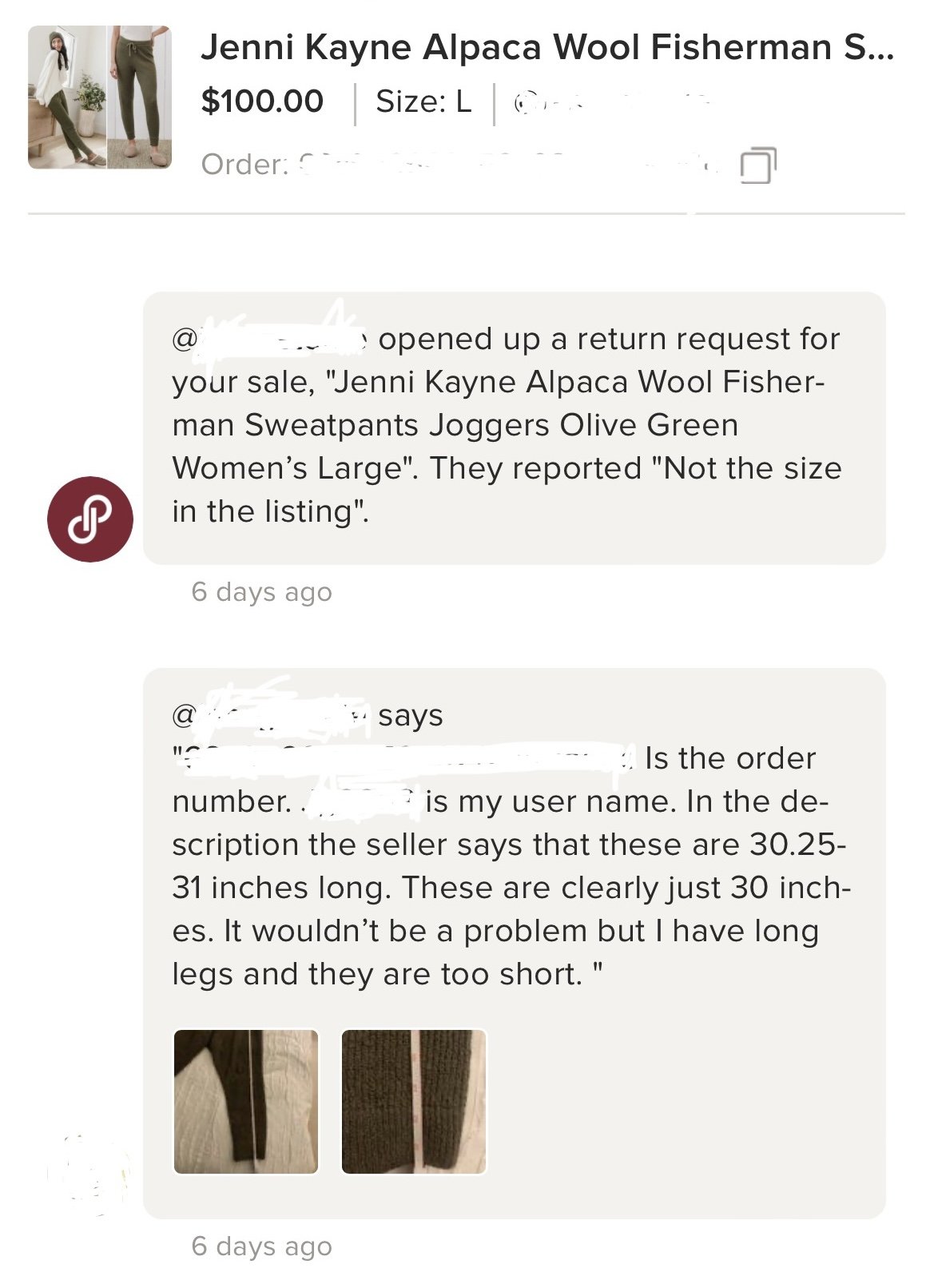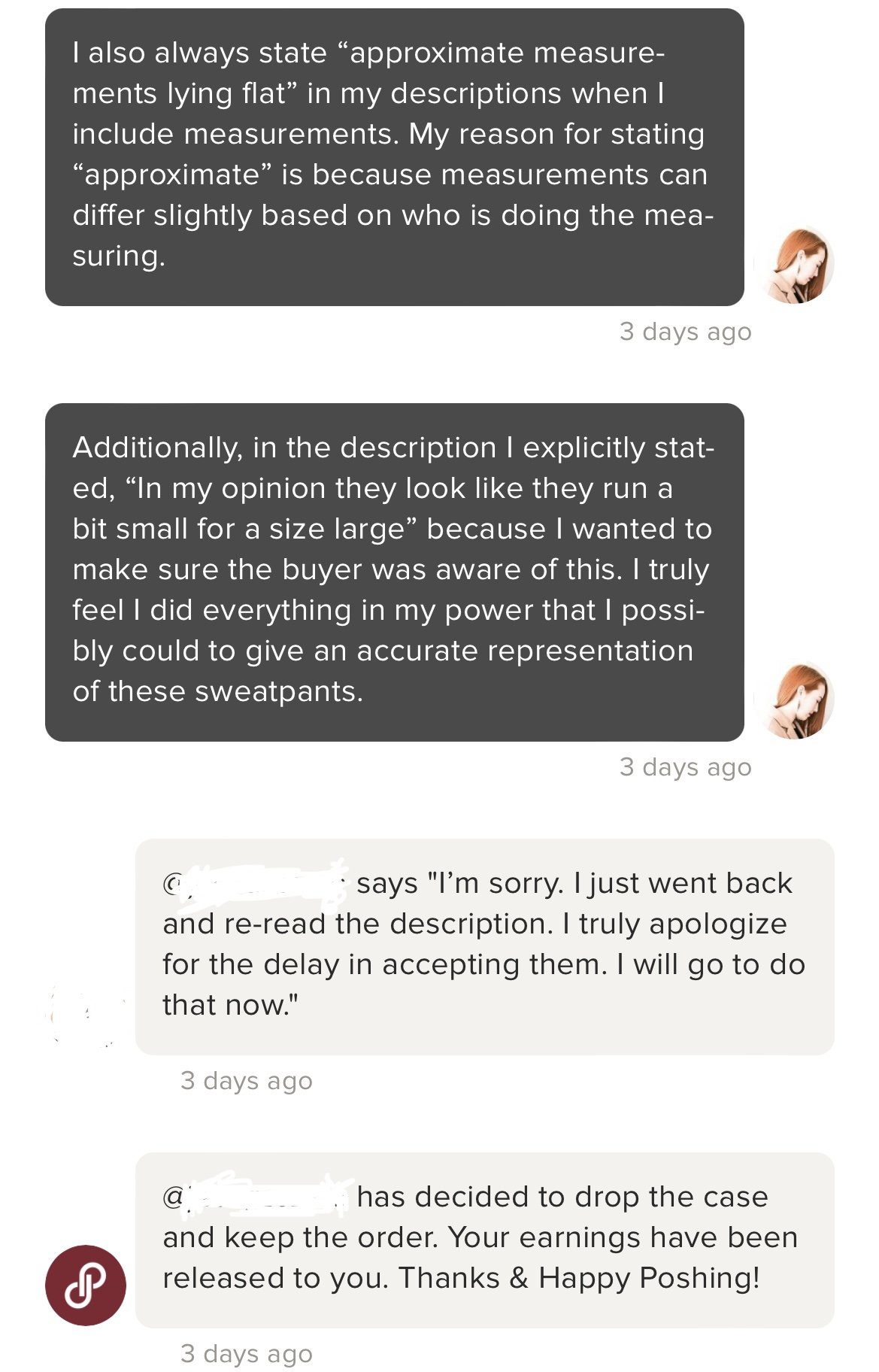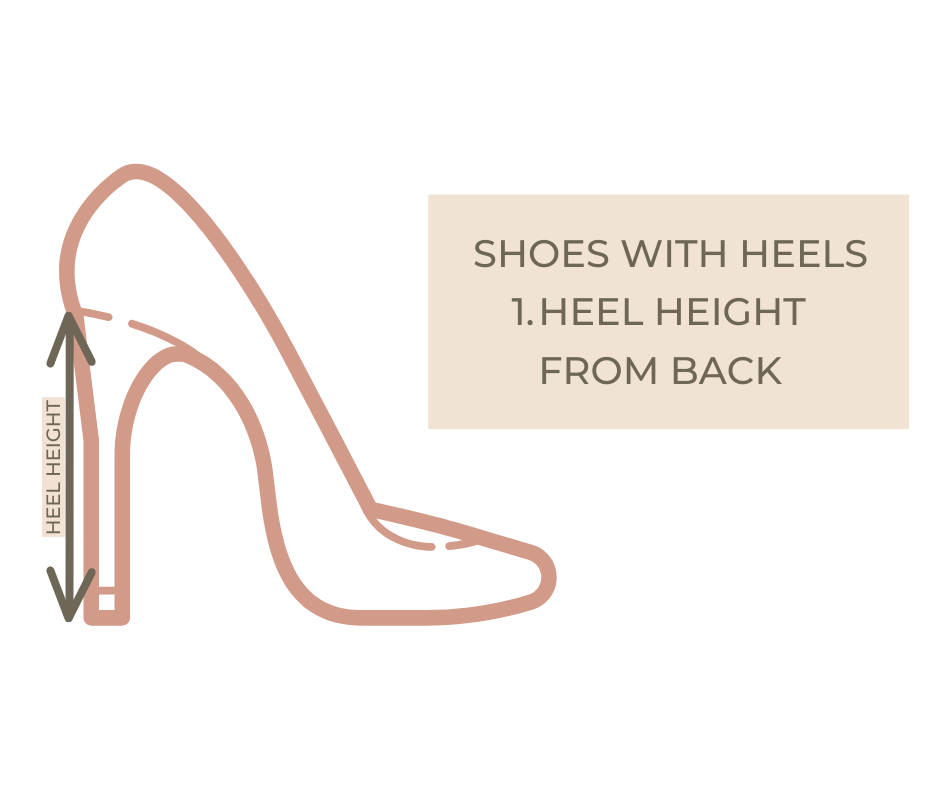Should You Include Measurements in Your Poshmark Listings? The Answer May Surprise You
One question that frequently plagues Poshmark sellers is: should I include measurements in my Poshmark listings?
You may be wondering: will it increase my sales? Are there any drawbacks? If you’ve been selling on Poshmark for any length of time, you’ve definitely received comments from shoppers requesting measurements. If you’re particularly unlucky, you may even receive them frequently. But should you answer measurement questions as they come in? Or should you include them in your listings from the get-go?
I wouldn’t say there is a right or wrong answer to this. There are several factors to consider when deciding whether to go to the effort of including measurements in your listings: are you a high or low-volume seller? Do you focus primarily on high-end or bread-and-butter brands? Are your items saturated on Poshmark or does your closet carry rare/unicorn items?
When I first began selling on Poshmark, I would only post measurements if a shopper specifically requested them. Later, I decided to switch to pre-measuring ALL my items before I listed them. Lately, I’ve only been pre-measuring certain items—ones that I know have undergone alterations. So trust me when I say: I’ve tried it all and can confidently share the pros and cons of each method from personal experience.
In this post, we’ll be examining:
When it makes sense to include measurements in your listings
Do’s and don’t if you DO decide to include measurements
The most common measurements buyers are looking for
By the time you’re finished reading this post, you will be armed with the clarity to know whether including measurements in your listings is the right move for you. You’ll also know which measurements are worth your time to post as well as how to measure those areas accurately.
When does it make sense to include measurements in your listings?
YOU SELL PRIMARILY HIGH-END ITEMS
If your Poshmark closet mainly consists of high-end items, it’s likely worthwhile to take the extra few minutes to pre-measure everything before you list it. Simply put: each sale brings you enough profit that you can afford to build this service into your business model. When you pre-measure items, you’re essentially giving your buyer the gift of convenience. They don’t have to go to the trouble of messaging you to request measurements, nor do they have to wait for your reply. Plus, with measurements readily available, there’s a lot less holding them back from clicking the “Buy Now” button. Additionally, when they receive the item in the mail, it’s more likely to fit them juuuuust right.
Likewise, if you sell primarily low to mid-tier items, it’s probably not worth your time to pre-measure each and every item. Your business model relies on high volume and fast turnover. Buyers paying $15-$35 shouldn’t be expecting the sun, moon, and stars from you. Plus, measuring hundreds of items will only lead to burnout. Save yourself the trouble and instead respond to measurements on a case-by-case basis.
YOU WANT TO HAVE A LEG UP ON THE COMPETITION
If you’ve done your research and know a particular item in your closet is oversaturated (i.e. there is more than one [of your same item] available on Poshmark in the SAME SIZE) then including measurements could help give you a competitive edge. It’s one less reason for a buyer to hesitate to purchase. In the secondhand resale market (and in online shopping in general) you want to give shoppers the FEWEST number of reasons to click away from your listing and forget about it. If they’re unsure about whether an item will fit, that is a BIG reason to just “come back to it later”.
So if your main motive in measuring is to increase the ODDS of someone buying your item, you’re better off posting measurements in your listing when you list the item—not waiting until a shopper makes a request. Why? We live in an age of instant gratification. People have short attention spans. If someone comments asking for measurements, nine times out of ten you’re going to be busy. Maybe you’re working. Maybe it’s 2 AM and you’re already fast asleep. Maybe you’re watching Netflix with your boo. The point is—you’re probably not going to see the comment. And let’s be honest—even if you do—are you really going to pull yourself out of bed to go measure right that very second?
But to play the devil’s advocate, let’s say you’re Superman and you’re lightning-quick to respond. Even within that short period of time, there’s a good chance your shopper has moved on and is already scrolling somewhere else on Poshmark looking at other listings. You’ve lost the sale.
Don’t believe me? Try this: keep a written record of the number of times someone makes a purchase right after you respond to their comment and provide the measurements they’ve asked for. I think you’ll quickly figure out that 90% of the time they either ghost you or respond, “Oh darn, that won’t fit me!”
AN ITEM HAS BEEN ALTERED
If you know (or suspect) an item has been altered by a tailor, you definitely want to include measurements upfront. For example, I have a consignment client who consistently gets her jeans altered at the waistband. I actually did not realize this until I had a buyer open a case against me on Poshmark, citing the alterations. Spoiler alert: the case was approved and the jeans got returned. Upon closer inspection, I realized they had, in fact, been altered. Now, anytime this consignment client gives me jeans/pants I always check them for alterations. If they’ve been altered then I post measurements in the description when I list them. Additionally, I will include a disclaimer that says, “Please refer to measurements in case alterations have occurred” to cover my butt in the event that a case gets opened.
Do’s and Don’ts for including measurements
WHAT TO DO:
Use a soft measuring tape—not a rigid one. I like using round retractable measuring tapes like this one. It’s small and easy to store when you’re finished with it. Big, bulky measuring tapes (like the ones you use to measure a wall in your house) are not only clunky, the little metal piece on the end could potentially snag a delicate fabric. Here are a few soft retractable measuring tapes I recommend:
Lay your garment flat when measuring for the most accurate measurement. Do not measure it while it’s hanging on a hanger and certainly do not lay it on an uneven surface (even a lumpy bed can be uneven). If your measurement is off (especially if it’s off by a LOT) buyers may notice and potentially complain or worse—try to return the item.
Try to use a clean surface (like a table) when measuring items. If you absolutely must lay your garment on the floor to measure, ensure that it is clean (no dirt that could transfer onto the item and cause stains) and if you own pets check thoroughly for hair after you’ve finished measuring.
In all my time selling on Poshmark, I have only had one weird instance where a buyer opened a case against me stating that my measurements were inaccurate. Here’s how that conversation went:
Long story short, the buyer ended up dropping the case upon realizing she was in the wrong. So while it worked out in my favor, it did give me insight into how Poshmark handles disputes over measurements. I was SO confident that this would be an open-shut case in my favor. After all, the buyer was claiming that my measurements were 0.25” off. To me, a 0.25” difference seemed so inconsequential.
I figured the Poshmark staff member who was in charge of the case would realize that insignificant of a difference could be chalked up to user error (or heck—maybe our measuring tapes were slightly different!). But the fact that Poshmark requested more photos from the buyer communicates to me that ultimately, they would’ve sided favorably with the buyer. After all, I didn’t have photos of my own measurements to submit to prove I’d measured correctly.
So what does this mean for you as a seller? If you REALLY want to cover your butt, consider taking photos of your measurements and saving them to your phone’s camera roll until each order is complete—especially if your day would be *ruined* by having a case opened against you (disputing the accuracy of your measurements).
Again, this has only happened to me once since I’ve been selling on Poshmark, so it doesn’t appear to be a rampant problem. If you wouldn’t be bothered by having a case opened against you, feel free to disregard this step and save yourself the hassle.
WHAT NOT TO DO:
Don’t waste time measuring every little inch of your item. It’s unnecessary and a time-suck. Just cover your bases. For example, pit-to-pit and length are the most commonly requested measurements for shirts. Heel height (and shaft height/circumference for tall boots) are usually the only stats people look for when it comes to shoes. Don’t overthink it or you’ll spend your entire day measuring, which is a surefire recipe for burnout.
Avoid measuring oddly shaped items. The last thing you need is a buyer opening a case against you with the argument that you provided inaccurate measurements. If a measurement isn’t obvious or straightforward, don’t bother with it. This also applies to flowy and billowy items or garments that have weird necklines (i.e. a halter neck dress). Again, you’ll know to avoid measuring if the measurement is tricky and could be open to interpretation.
This can also apply to situations where a buyer requests a bizarre measurement that’s too difficult to measure accurately. Similarly, when someone asks, “Does this fit true to size?” avoid answering these types of questions at all costs. Instead, respond with something like, “Since ‘true to size’ means something different to everyone (and can vary greatly from person to person) I’d hate to answer your question and give you a potentially inaccurate representation of the fit.” Offer to provide measurements instead.
The most common measurements buyers are looking for
As I mentioned earlier, it’s important not to get carried away measuring every little angle of a garment (hello, burnout!). Sticking to the most commonly requested measurements is key. Not sure how to take measurements? Don’t sweat it! To make things easy, I’ve included a visual guide below for how to measure pants, tops, skirts, dresses, and shoes that have heels.
HOW TO MEASURE PANTS
HOW TO MEASURE SHIRTS AND JACKETS
HOW TO MEASURE SKIRTS
HOW TO MEASURE DRESSES
HOW TO MEASURE SHOES WITH HEELS
Now that you’ve read about all the pros and cons of including measurements in your Poshmark listings, which route will you take? Will you pre-measure items or wait for buyers to request measurements? Let me know in the comments below!
Get $10 when you sign up for Poshmark using my invite code: POSHTOPROFIT





















